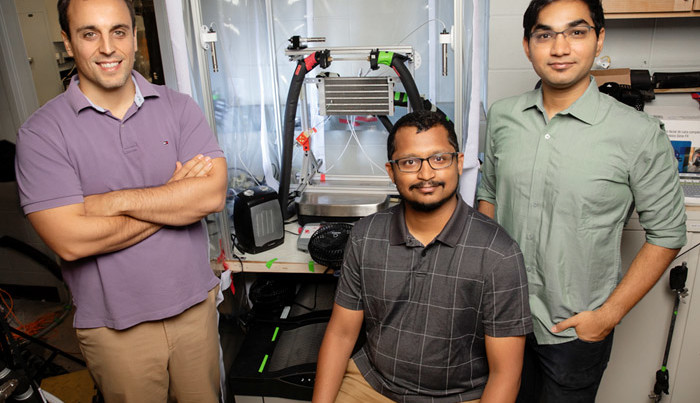Speedy De-icing Technique
September 11, 2019
on
on

All types of wings, from aircraft to helicopter and wind turbine rotors, to air-heat pumps, have problems with surface icing at low temperatures. Ice is heavy and disrupts air flow over a wing or rotor and can cause rotating blades to become unbalanced. On aircraft, conventional de-icing techniques use a lot of energy to heat up the leading edges of flying surfaces where the ice tends to form. Researchers at the University of Illinois and Kyushu University in Japan have now developed a new technique which reduces the volume of the structure that requires to be de-iced to a very thin electrically-conductive layer.
The great advantage of this new technique is that it requires less than 1% of the energy and even less than 0.1% of the time of traditional de-icing techniques, as described in the journal Applied Physics Letters in an article entitled ‘Pulse interfacial defrosting’.
Conventional systems melt the ice by heating the ice-coated structure, such as wings and/or metal surfaces of casings, etc. This uses lots of energy and is a relatively slow process to overcome thermal inertia of the structure.
The researchers applied a thin coating of indium tin oxide (a conductive film often used for defrosting applications) to the material surface and fired a narrow, high-energy electrical pulse through the film. This quickly melts ice at the surface so that it loses its adhesion and slides or is blown off in the air stream.
To test their idea they applied the indium tin oxide coating to a vertical glass plate cooled to -15 ° C and -70 ° C. This temperature range corresponds to typical values you can expect in refrigeration and aerospace applications. In all tests the ice could be removed using a pulse duration of less than 1 s.
Aircraft wings, however, would require a great deal of peak power but the average power used by the system remains very low. Further developments are necessary before the system can be integrated into the aircraft electronics and also to ensure electromagnetic compatibility with all other aircraft systems.
The great advantage of this new technique is that it requires less than 1% of the energy and even less than 0.1% of the time of traditional de-icing techniques, as described in the journal Applied Physics Letters in an article entitled ‘Pulse interfacial defrosting’.
Conventional systems melt the ice by heating the ice-coated structure, such as wings and/or metal surfaces of casings, etc. This uses lots of energy and is a relatively slow process to overcome thermal inertia of the structure.
The de-icing principle
The researchers applied a thin coating of indium tin oxide (a conductive film often used for defrosting applications) to the material surface and fired a narrow, high-energy electrical pulse through the film. This quickly melts ice at the surface so that it loses its adhesion and slides or is blown off in the air stream.To test their idea they applied the indium tin oxide coating to a vertical glass plate cooled to -15 ° C and -70 ° C. This temperature range corresponds to typical values you can expect in refrigeration and aerospace applications. In all tests the ice could be removed using a pulse duration of less than 1 s.
Aircraft wings, however, would require a great deal of peak power but the average power used by the system remains very low. Further developments are necessary before the system can be integrated into the aircraft electronics and also to ensure electromagnetic compatibility with all other aircraft systems.
Read full article
Hide full article



Discussion (0 comments)